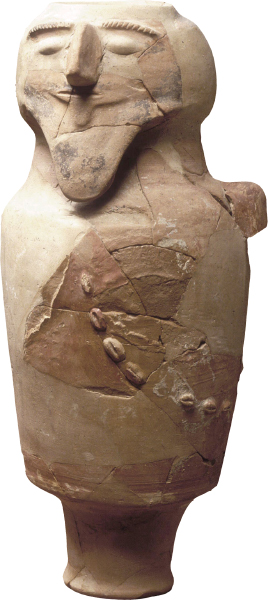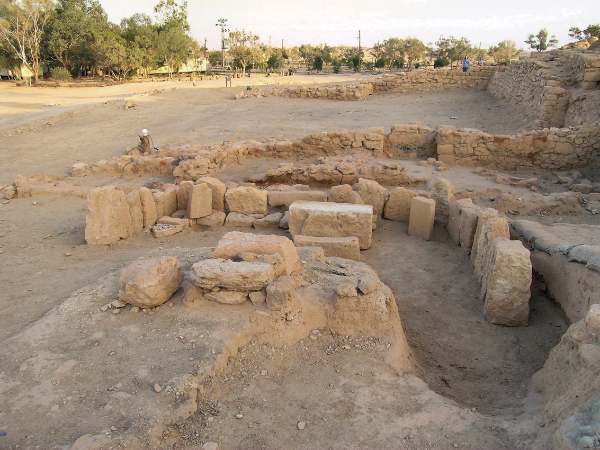Malachi’s Thesis Disputation: Yahweh’s Covenant Love for Israel (1:1–5)
Esau … Jacob (1:2). These proper names refer to the twin brothers born to Isaac and Rebekah (Gen. 25:22–25). The names are intended to recall the patriarchal traditions regarding the rivalry of the two (see Gen. 26; 27; 33). Esau was the eponymous ancestor of Edom, and for Malachi he symbolizes all those who in their arrogance and self-will reject the tokens of Yahweh’s covenant and despise the nation of Israel as Yahweh’s elect (cf. 25:29–34; 26:34–35). The OT chronicles a long history of conflict between the nations Edom and Israel, from the time of Israel’s exodus from Egypt when the Edomites denied Israel passage to the east and threatened them with a show of force (Num. 20:14–21; 21:4) to their abetting Babylonia in the sack of Jerusalem (Ps. 137:7; Obad. 10–16). The name Esau is unattested elsewhere in the ancient world and its etymology is uncertain.
Jacob was Esau’s younger twin brother and the eponymous ancestor of the Israelites. He was one of the three ancient biblical patriarchs (along with Abraham and Isaac, cf. Ex. 3:6) and the father of the twelve tribal heads of the Hebrew nation (Gen. 49:1, 28). The name Jacob is commonly used in prophetic literature to identify the nation of Israel and is often combined with “Israel” in a word pair (e.g., Mic. 1:5; 3:1). This name is widely attested outside the Bible, including Egyptian inscriptions recording Semitic names from the Hyksos period and Old Babylonian documents from Mesopotamia.7
Edom (1:4). The country of Edom (also called Hor, Seir, and Esau) was located in the highlands and sandstone cliffs on the southeastern edge of the Dead Sea, from the Brook Zered in the north to the Gulf of Aqaba in the south. A strong tribal organization existed in Edom from patriarchal times (cf. Gen. 36:1–30), and the Edomites had a form of monarchy before the Hebrews (see the “king list” in 36:31–43). Little is known of Edomite religion, although the Bible’s “benign approach” to Edomite religious custom is a curiosity. Hoglund notes that the OT treats Edomite religion with a respect accorded no other neighboring people.8

Anthropoidic terracotta cult stand from Qitmit, 7th-6th century
Z. Radovan/www.BibleLandPictures.com
Recent archaeological discoveries in the eastern Negev reveal Edomite expansion into Judah during the early sixth century B.C., most likely when Babylonia threatened Judah. Among the artifacts uncovered at Qitmit and En Hatzeva were limestone altars, terra cotta cult stands (probably incense burners), and assorted figurines, suggesting that the sites incorporated Edomite religious shrines. Inscriptional evidence from seals and seal impressions indicate Qôs was a principal deity among the Edomites, perhaps a storm god similar to Hadad of the Arameans.9

Shrine outside the gate at En Hatzeva, about twenty-five miles east-northeast of Kadesh Barnea
Todd Bolen/www.BiblePlaces.com
As early as 597 B.C. the control of the Negev was wrested from Judah by the Babylonians (cf. 2 Kings 24:8–17), and Edomites moved into the area to fill the vacuum. In 587 Edom not only assisted Babylon in the sack of Jerusalem but also occupied Judean villages well into the Persian period (cf. 1 Esd. 4:50). The exact date of Edom’s collapse remains imprecise and the circumstances causing Edom’s downfall are uncertain. By the time of Malachi’s oracle (early to mid-fifth century B.C.) the Edomite kingdom lay in ruins. It is possible that Malachi refers to the invasion and destruction of Edom in the mid-sixth century B.C. by Nabonidus, the last of the Babylonian kings.10
Yet it appears that Edom continued to exist in some form as an independent political entity until a coalition of Arab tribes overpowered and displaced the Edomites sometime during the fifth century B.C. (note Malachi’s reference to Edom’s plans to “rebuild,” Mal. 1:4).11 The Qedarites, a powerful nomadic tribe in Syria and northwest Arabia, may have been one of these tribes, given their heavy involvement in the incense trade.12 By 312 B.C. inscriptional evidence indicates that the Nabateans had overrun the region of Edom, making Petra their capital city. Surviving Edomites either moved to Idumea or were absorbed by the Nabatean Arabs through intermarriage.13

Sela and vicinity, about twenty miles south-southeast of the southern tip of the Dead Sea (Edomite territory)
Todd Bolen/www.BiblePlaces.com